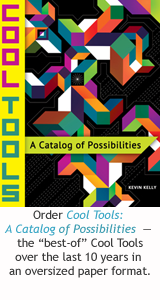-
What the best current model/make for walkie talkies?
Answers Given
Answers Favorited
-
In the era of ubiquitous cell phones, do walkie talkies even make sense these days? I do see event coordinators using them. What's the scoop of two-way radios and what's the best gear?
0 -
|
The two-way radio feature that beats cell phones with every time is their party-line aspect. If you're running a crew in a chaotic scene, then cells are really limiting and two-way shines. With a two-way system, everyone gets a sense of who's where and doing what. They're synergistic. The tech of two-way radio is a huge topic that others can weigh in on...but a well-run system is a great tool to build an otherwise impossible-to-manage team functioning in moderate to very large areas. Consider rental of pro gear (portable/mobile/repeater access) or buying essentially disposable consumer-grade Motorola stuff. |
|
I have a lot of experience with two way radio gear in the law enforcement and public safety and to a lesser extent business contexts. Wayne is right - but there are many other substantial advantages. However, in field tests we've run in different contexts (geographic and architectural), we've concluded that the Motorola consumer stuff is nearly worthless. I don't think I can fully answer the question in the context of a comment - too many variables, both regulatory and technological. But would be happy to write something longer, which I've been meaning to do for my blog Popular Logistics anyway. But here's a short answer:
Hope this is helpful. Jon |
|
Yes, Jon, I'd love to hear you specific recommendations. In case I can't reach you directly, my email is kk@kk.org. |
|
I've been using a Midland 75/822 CB in a really casual way for the past few years - taking it on road trips mostly. It is nice to turn it on when you hit heavy traffic to see what the truckers know about the road conditions (and they always know). The device seems capable and I liked the options - it comes with a battery pack that takes 6 alkaline AAs, a pack that takes 8 rechargable AAs, and cover that uses the 12v power jack in your car. I can't speak much to the range but I occasionally crank it up and can hear chat from the interstate over a mile away (using an extended antenna like this one. |
|
If you're looking at the consumer market, I'd suggest looking at Motorola MH230R or for slightly longer range the MR350R. They're in the $50 range/pair. I lived for several years in the Eastern Sierra where we used these for hiking. Usually they were good for 2-3 miles over mountainous terrain, and of course much further if users were in line of sight. You can also use them for NOAA weather. They're light & cheap enough to be practical, require AA batteries (rechargeables work fine) and are durable. On some hikes we'd have 5 or 6 deployed, carried by hikers of varying speeds, so we could keep tabs on where everyone was, and for that purpose they worked rather well - not perfect, but mostly good enough. If you're within a few hundred yards of another radio, they always worked, even around large obstacles. |
A cool tool can be any book, gadget, software, video, map, hardware, material, or website that is tried and true. All reviews on this site are written by readers who have actually used the tool and others like it. Items can be either old or new as long as they are wonderful. We post things we like and ignore the rest. Suggestions for tools much better than what is recommended here are always wanted.
Tell us what you love.CATEGORIES
- Announcements
- Aural
- Autonomous Motion
- Backpacking
- Big Systems
- Clothing
- Communications
- Community
- Computers
- Consumptivity
- Craft
- Culture
- Dead Tools
- Deals
- Design
- Destinations
- Dwelling
- Edibles
- Every Day Carry
- Family
- Gardens
- Gareth's Tips
- General Purpose Tools
- Health
- Homestead
- Inner Space
- Kitchen
- Learning
- Life on Earth
- Livelihood
- Living on the Road
- Maker Tools
- Maker Update
- Materials
- Media Tools
- No Stream
- Nomadico
- Paper World
- Photography
- Play
- Podcast
- Prove Us Wrong
- Readers' Gifts
- Recomendo
- Related Stuff
- Science Method
- Somatics
- Source Wanted
- Tips
- Tool Chest
- Tools for Possibilities
- Uncategorized
- Vehicles
- Videos
- Visual Media
- What's in My Bag
- Workplace
- Workshop




